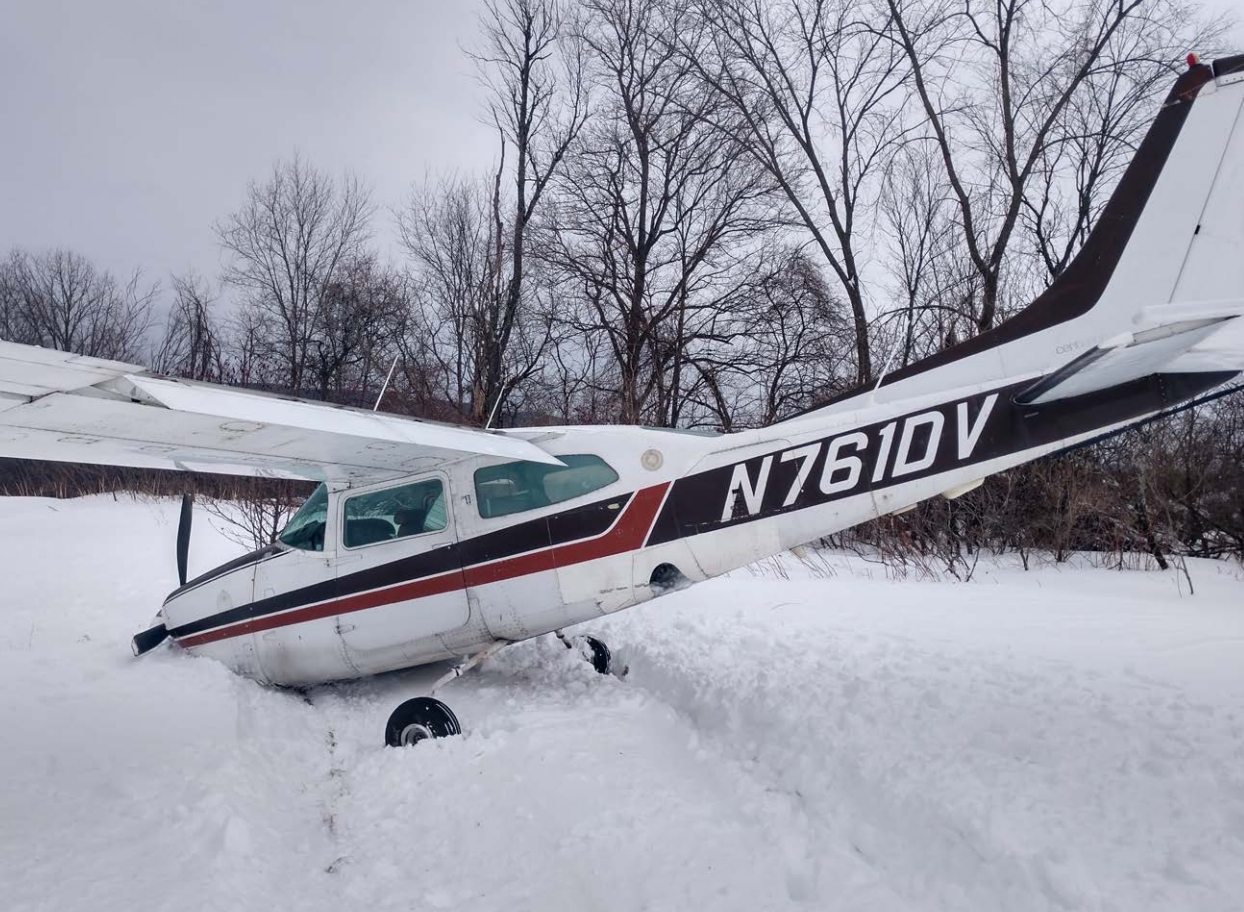
ASN Wikibase Occurrence # 207714
This information is added by users of ASN. Neither ASN nor the Flight Safety Foundation are responsible for the completeness or correctness of this information.
If you feel this information is incomplete or incorrect, you can submit corrected information.
| Date: | Friday 16 March 2018 |
| Time: | 14:45 |
| Type: |  Cessna 210M Centurion |
| Owner/operator: | Private |
| Registration: | N761DV |
| MSN: | 21062182 |
| Year of manufacture: | 1977 |
| Total airframe hrs: | 10030 hours |
| Engine model: | Continental IO 520 SERIES |
| Fatalities: | Fatalities: 0 / Occupants: 1 |
| Aircraft damage: | Substantial |
| Category: | Accident |
| Location: | Chittenden County, northeast Shelburne, VT -
 United States of America United States of America
|
| Phase: | Landing |
| Nature: | Survey |
| Departure airport: | Burlington International Airport, VT (BTV/KBTV) |
| Burlington International Airport, VT (BTV/KBTV) | |
| Investigating agency: | NTSB |
| Confidence Rating: |
The commercial pilot stated that he did not visually check either fuel tank before takeoff because he had observed the airplane being fueled the day before; he assumed that the tanks were full (44.5 gallons of usable fuel per tank, 89 gallons total) and that he would have sufficient fuel (6.5 hours) for his estimated 5-hour aerial survey flight. He departed with the fuel selector positioned to the left tank; his normal routine was to switch fuel tanks every hour for the first 4 hours of flight. About 3 hours into the flight, the engine lost total power. The pilot switched the fuel selector to the right tank and attempted to restart the engine to no avail; he made a forced landing to a snow-covered field, which resulted in substantial damage to the fuselage, an engine mount, and the firewall. Postaccident examination revealed that the left- and right-wing fuel tanks were undamaged, that both fuel caps were secure, and that there was no evidence of leaks. The left tank was empty, and 33 gallons of fuel were drained from the right tank. Visual examination of the engine revealed no evidence of mechanical malfunctions or failures that would have precluded normal operation. Although the pilot indicated that his typical routine was to switch fuel tanks every hour, given the amount of fuel remaining in the right tank, it is likely that the pilot did not adequately manage the fuel supply during flight, which resulted in the total loss of engine power due to fuel starvation.
Probable Cause: The pilot's inadequate fuel management, which resulted in a total loss of engine power due to fuel starvation.
Accident investigation:
 |
|
Sources:
NTSB
FAA register: http://registry.faa.gov/aircraftinquiry/NNum_Results.aspx?NNumbertxt=761DV
Location
Images:

Photo: Vermont State Police
Revision history:
| Date/time | Contributor | Updates |
|---|---|---|
| 16-Mar-2018 22:25 | Geno | Added |
| 17-Mar-2018 01:15 | Iceman 29 | Updated [Source, Embed code] |
| 01-Jun-2019 07:28 | ASN Update Bot | Updated [Time, Operator, Departure airport, Destination airport, Source, Narrative, Accident report, ] |
| 01-Jun-2019 19:12 | harro | Updated [Departure airport, Destination airport, Source, Embed code, Narrative, Photo] |
Corrections or additions? ... Edit this accident description
The Aviation Safety Network is an exclusive service provided by:


 ©2024 Flight Safety Foundation
©2024 Flight Safety Foundation